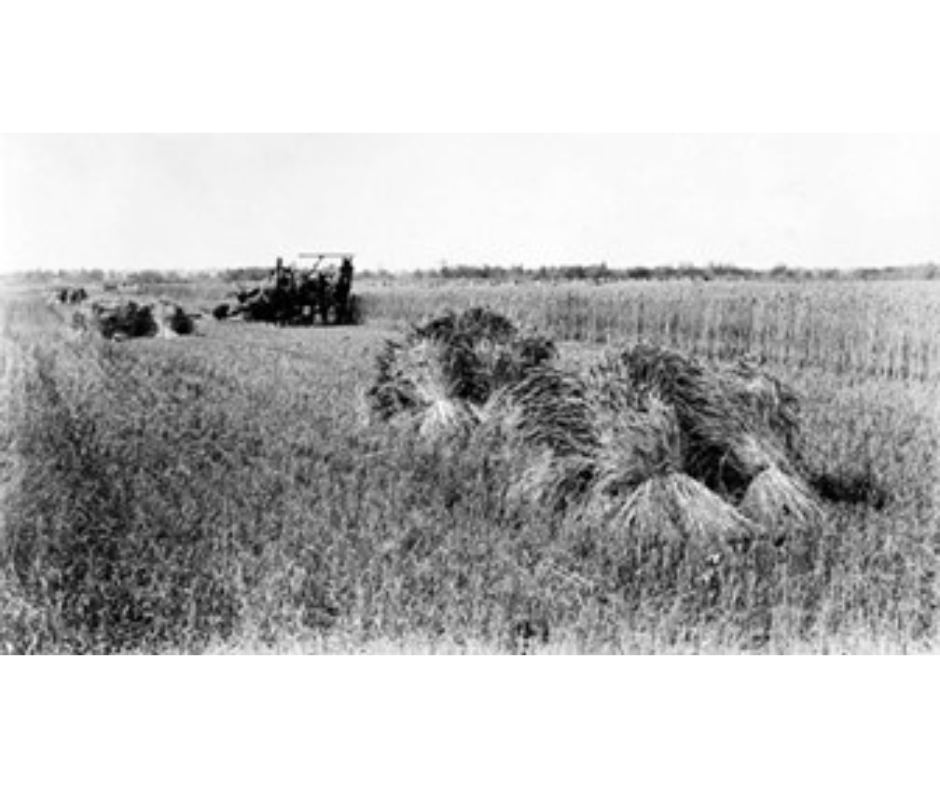Northwest of Moose Jaw, on Highway 42 is the Village of Marquis.
Originally, two Dudes, a Mr. McFalen and a Mr. Meager settled in the area. Each had an idea for a name. They could not agree. In 1909 the CPR stepped in and named the village, Marquis after Marquis Wheat.
So What’s the Big Deal about Marquis Wheat
Early Saskatchewan Settlers and Farmers sowed Red Fife Wheat they got from Ontario. It had been successfully harvested there for fifty years. They assumed it would be a good wheat variety for the Northern Great Plains.
They assumed wrong!
Red Fife needs a long growing season. Regular, early Saskatchewan frost shorten our growing season. Growing Red Fife Wheat was ‘nip and tuck’ and farmers on not like ‘nip and tuck’.
The theme for drawing Settlers to the Prairies, and a way for the CPR and others to make money, was to brag-up the quality and quantity of vast wheat growing farmlands.
The Problem: there wasn’t a Wheat variety that would grow on the ‘vast farmland’. Farmers needed a Wheat that would mature in the shorter growing season.
Enter Dr. William Saunders and his Boys
In 1886 Dr. William Sanders was made Director of the Dominion Experimental Farm Services. Experimental Farms were established at Agassiz, BC; Brandon, Man.; Indian Head, SK and in Ottawa.
Finding a New Wheat Variety Became a Family Affair
A new variety was eventually developed by Sir Charles Saunders, son of Dr. William Sanders.
It all began in 1892 when Charles’ brother Percy did the initial work at the Agassiz Experimental Farm. Percy crossed the preferred Red Fife Wheat, because of its baking qualities, with the earlier maturing, shorter, Hard Red Calcutta Wheat from India.
Once Percy had produced enough ‘crosses’, Charles took over. He selected and grew seeds Percy had produced and tested each for a better variety. The Wheat had to mature early and have the baking qualities of Red Fife.
Testing and growing and testing and growing was not easy. It took several years but Charles Saunders was the right guy for the task. He had a PhD in Chemistry and was meticulous.
Finally, after 15 years, in 1907, Charles had enough selected seeds to have large scale Yield Trials at the Indian Head, Saskatchewan Experimental Farm. The new variety, now called Marquis, matured 7 to 10 days earlier than Red Fife but still had the same outstanding baking qualities of Red Fife. The Yield Test produced 41.6 Bushels to the acre. (Canadian Encyclopedia) An overwhelming success.
Within ten years Marquis was the dominant wheat variety in Saskatchewan. The seed was exported around the world.
Sir Charles Saunders

Sir Charles Edward Saunders was born in London, Ontario in 1867 and died in Toronto in 1937. He had four brothers, all very capable in their fields. Charles was exceptionally well educated. He was knighted in 1934 for his plant breeding work.
Charles was a sensitive lad. In 1922 he suffered a serious nervous break-down. To cope he quit his plant-breeding work and moved to Paris where he studied French Literature and Music. From 1922 until his death, Music was his passion.




